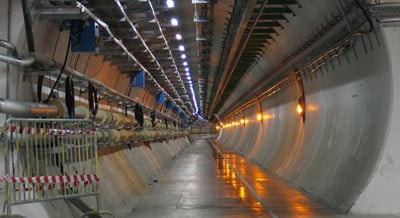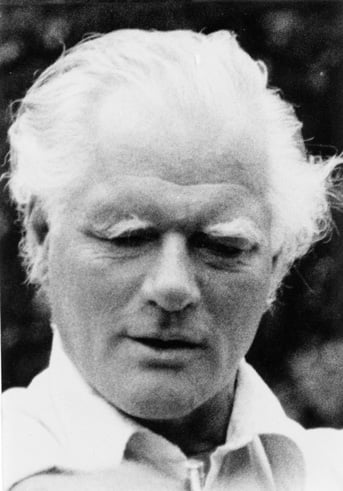Original URL: https://www.theregister.com/2008/09/09/anton_wylie_lhc/
The Hadron Collider: What's it all about, then?
Never mind the bosons
Posted in Science, 9th September 2008 21:39 GMT
Around about now, boffins will be eagerly awaiting news that protons are finding their way fully around the 27km circuit of CERN's Large Hadron Collider, the latest and best atom-smasher particle accelerator - and the biggest scientific experimental apparatus ever built.
This 10 September 2008 project milestone has captivated the mass media, despite the fact that the LHC began chilling-out back in August to allow its huge superconducting magnets to reach operating temperature. Full power operation testing is not scheduled until 2009.
Yet it would be amiss for us not to join in the jollity, so we here bring you the executive summary, shorn of the hype, conflations and bangs, of the state of play.
The genuine particle?
The LHC comes at a crucial time for particle or quantum physics. In particular, it comes at a crucial time for the dominant theory, known as the Standard Model.
The Standard Model has been to modern particle physics rather what the periodic table was to 19th century chemistry. It served both to organise the known entities systematically, and as an impetus to fill in the holes in our knowledge. The Standard Model can claim to have predicted the existence of several previously unexpected particles, which were subsequently discovered experimentally. Arguably, too, it has also seeded the separate field of quantum information theory, and quantum computing.
From the point of view of having things neat and tidy, there is just one hole in the jigsaw of Standard Theory. The missing piece is the (by now surely) world-famous Higgs boson - popularly known now as the "God particle". So named not because it could resolve the Augustinian Dilemma, but perhaps as in, "Oh God, when are we going to find it?". More seriously, the Higgs boson could account for the mass properties of the other entities - why some have it, and some don't. So if particle physicists observe the Higgs boson, they can effectively draw a line under 50 years or so research, slap themselves on the back, and move on.
Unfortunately, the Higgs boson has spent over 40 years hiding - ironically not because it is tiny. The Standard Model unfortunately does not predict its mass. As efforts have concentrated on manufacturing the boson in particle accelerators, its continuing elusiveness has been put down to it being big - a tad too big.
Hence the LHC, which crudely speaking whizzes bits of matter to as fast a speed as possible. Experimenters let these crash into various targets to see what new interesting bits emerge. The record-breaking energies of the LHC require similarly record-breaking electro-magnets to achieve.

The LHC though may be the last bite at the cherry. There are reasons to think that the creation of Higgs boson will remain elusive - and less likely to appear at collision energies higher than those the LHC is capable of attaining. Should the Higgs boson not be flushed out with the LHC, physicists will find themselves in the awkward position of asking for funds for another, even larger collider, costing more than the £10bn that failed to find the "God Particle" that the politicians had been promised.
Nevertheless, successfully exhibiting the Higgs boson would be a big confidence boost to quantum physics, and would see these guys muscling in on physics at the other end of the size scale - cosmology.
Never mind the bosons
Look beyond the headlines, and questions begin to pile up.
It could be pointed out that particle physics has other gaping explanatory holes to fill. Among these is how to account for the fact that there is so much matter in the universe, and so little anti-matter. Another is gravity. Even with the Higgs Boson on board, the Standard Model does not raise our fundamental level of understanding of gravity over that of Newton, although we seem to know a lot more about it.
Particle physics has implications for cosmology, too. Standard Model co-originator Stephen Weinberg has been among others pointing out that the "cosmological constant", a factor used to balance up theory and observations about how fast the universe is expanding, is 120 orders of magnitude (10 to the power 120, natch) smaller than expected from particle physics. That number is so humongous - it is apocryphally known as physics' worst prediction - that it begs the question of how salient its implications are to an understanding of the origin and history of the universe.
That there are notable incompatibilities between the Standard Model and Einstein's theory of general relativity, considered to hold sway in the universe at large, is not well known outside of physics. There are disparities about how space and time should be conceived.
The metrics (geometries) of general realitivity and quantum mechanics are fundamentally incompatible, as poster lbrits succinctly puts it here. Unfortunately - or conveniently - the respective suppositions about space and time of these two theories are both equally remote from the everyday understanding and use of these things in other branches of science, and indeed, physics.
At warp speed
Above, I made the analogy between the Standard Model of particle physics, and the periodic table. The latter does not predict the atomic weights of the different elements, so an analogous situation in quantum physics might not be thought a big deal. But suppose that were not so: it could smooth the way to a real rapprochement of particle physics and cosmology.

Burkhard Heim
In 1977, a little-known physicist called Burkhard Heim published formulae for predicting the mass of particles. As the New Scientist reported, when Heim's formulae were implemented in a computer program in 1982, "[it] predicted masses of fundamental particles that matched the measured values to within the accuracy of experimental error". That's much more accurate than the best the physics establishment had been able to achieve: "the accepted means of estimating mass theoretically, known as lattice quantum chromodynamics, only gets to between 1 and 10 per cent of the experimental values."
Heim's theory is one example of sporadic attempts, away from the mainstream, to unify relativity and quantum physics. First revealed in 1957, Heim suggested that space could be locally modified to create a hyperdrive propulsion capable of making the trip to Mars in five hours. Since then it has garnered supporters, whose latest developments have caught the eye of NASA and ESA, see here.
Whether or not the Higgs boson turns up at the LHC, perhaps the perceived success of the Standard Model may be a happy accident of new particles turning up at indeterministic but opportune moments. But even if the Boson is captured, an increasing public awareness of long-standing loose threads in the broad account of the universe may make the celebrations at CERN short-lived. ®